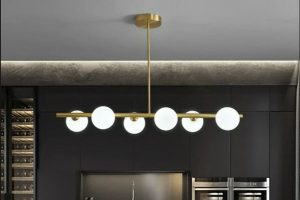Wabi Sabi: The Beauty of Imperfection in Japanese Design
Introduction
Wabi Sabi is a Japanese concept that has influenced and inspired not only their own culture but also the western world. It is an art of finding beauty in imperfection, simplicity, and asymmetry. Wabi Sabi Design is deeply rooted in traditional Japanese culture, and it is a way of life that focuses on the appreciation of the beauty of nature, especially the beauty of the transient and the impermanent.
History of Wabi Sabi Design
Wabi Sabi can be traced back to the 15th century when a group of Buddhist monks developed a philosophy of simplicity and mindfulness in their daily lives. It was later embraced by the noble class in Japan during the 16th century as a way of life that cherishes the poetry of impermanence, the beauty of the rustic, the irregular, and the simple things in life.
Elements of Wabi Sabi Design
Wabi Sabi Design is characterized by a few key elements. One of the most prominent elements is the use of natural materials such as wood, stone, and clay. These materials are chosen for their inherent imperfections, such as knots, cracks, and irregularities. The idea is to embrace these imperfections and allow them to add character and depth to the design.
Another essential element of Wabi Sabi Design is an appreciation of the passage of time. The design should reflect the natural process of aging and decay. This can be observed in the use of weathered materials and the incorporation of objects that show signs of wear and tear.
Simplicity is also a vital aspect of Wabi Sabi Design. Designs are often minimalist and uncluttered, allowing for a sense of calm and tranquility. The idea is to strip away unnecessary elements, leaving only the essential elements of the design.
Wabi Sabi Design in Today’s Culture
Wabi Sabi Design has been embraced by artists, designers, and architects worldwide. The concept has influenced many different industries, ranging from fashion to interior design. Wabi Sabi can be seen in 21st-century design, in everything from the use of naturally occurring materials to the incorporation of asymmetry and simplicity in design.
Wabi Sabi Design has also influenced the way we live our lives. The concept encourages us to embrace the imperfections of life and find beauty in the everyday. It highlights the importance of mindfulness and appreciation of the simple things in life. Wabi Sabi Design is a way of living that offers a sense of peace and tranquility in an increasingly busy and chaotic world.
Conclusion
In conclusion, Wabi Sabi Design remains an essential concept in Japanese culture and has had a significant impact on the western world. Its appeal lies in the appreciation of the beauty of imperfection, simplicity, and the transient nature of our existence. Wabi Sabi Design offers a way of life that brings a sense of peace and tranquility, reminding us to find joy in the small things and to cherish the beauty of the imperfect.

